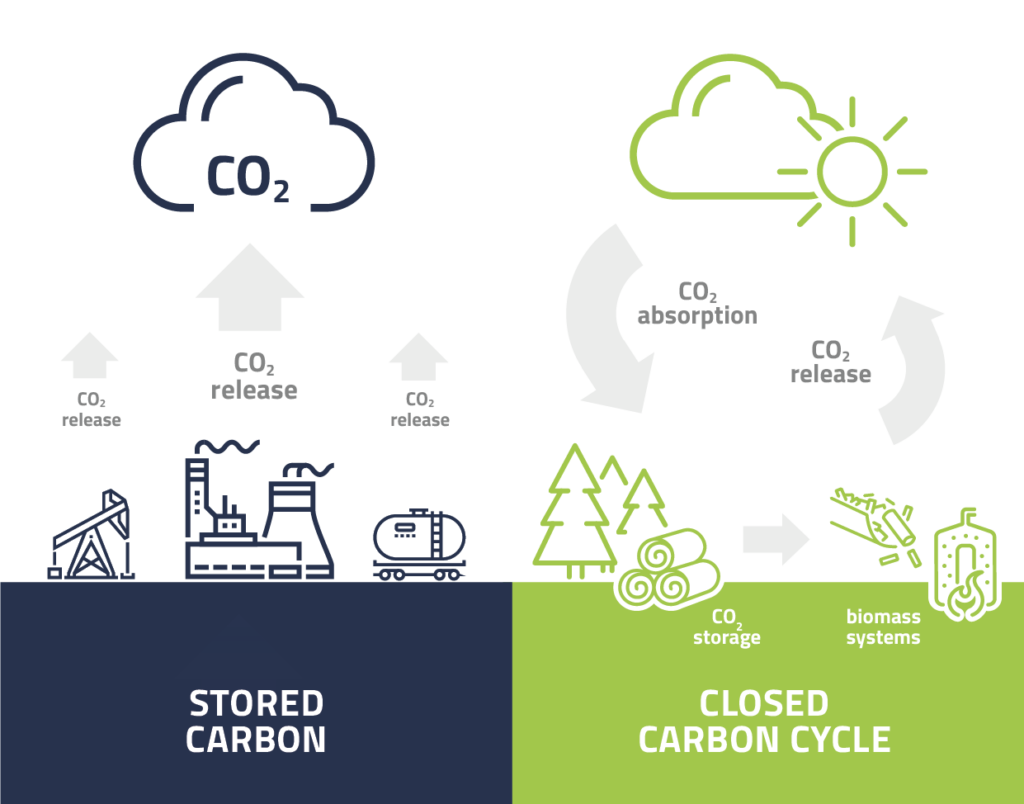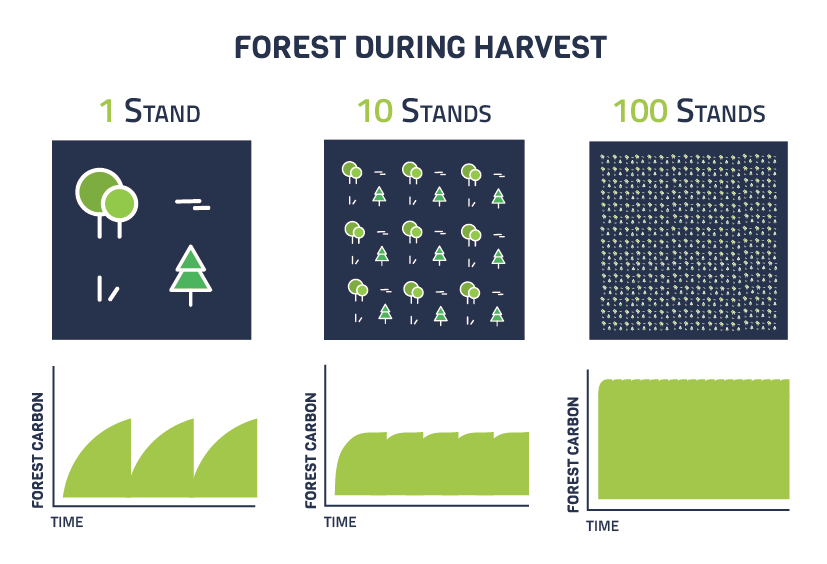Select Sidearea
Populate the sidearea with useful widgets. It’s simple to add images, categories, latest post, social media icon links, tag clouds, and more.
hello@youremail.com
+1234567890
+1234567890
Populate the sidearea with useful widgets. It’s simple to add images, categories, latest post, social media icon links, tag clouds, and more.
The symbiotic relationship between the forest-based industries and bioenergy showcases how environmental and economic sustainability can co-exist. By effectively managing and utilizing biomass by-products, bioenergy contributes significantly to climate change mitigation and to the development of a robust, sustainable energy system.
By adapting forest management practices to the changing climate and by utilizing woody biomass for energy, this symbiosis can support the health and resilience of forests while contributing to the bioeconomy and biodiversity protection.

Sustainable forest management aims to achieve a balance between the conservation and utilisation of forest resources, recognising the interrelation of environmental, economic, and social factors. It tackles climate changes disturbances and can contribute to biodiversity conservation, carbon sequestration, and local livelihoods.
The forest-based industry, which includes woodworking, furniture, pulp and paper and many other related businesses, has a crucial role in the sustainable management of forests.
Forest-based industries prioritise sustainability in their practices, meticulously managing the harvesting, processing, and utilization of wood resources to ensure a delicate equilibrium between fostering economic growth and safeguarding the environment.
One of the most promising aspects of this collaboration lies in the utilization of solid biomass for energy production (both for electricity and heat). Biomass, derived from forestry residues coming from sustainable forest management practices and sawmilling by-products, represents a renewable, reliable, and dispatchable source of energy.
Biomass products can substitute (fossil) carbon intensive materials. And biomass used for bioenergy is substituting fossil fuels and transitioning Europe towards a more sustainable and climate-resilient future. This is a fact.
Material substitution and bioenergy perfectly fit the new economic model based on circularity. This synergy in fact supports the establishment of a circular bioeconomy, where the by-products of sustainable forest management are valorised as essential resources for renewable energy.
Sustainable forest management contributes to increasing the carbon sink. Improving the forest productivity and bolstering its resilience to climate change are two ways to enhance the sequestration of carbon in sustainably managed forests.

 Forests act as significant carbon sinks, as trees absorb CO2 during photosynthesis and transform it into biomass. Young forests sequester CO2 at a faster rate compared to older forests, which experience diminishing carbon sinks as they mature.
Forests act as significant carbon sinks, as trees absorb CO2 during photosynthesis and transform it into biomass. Young forests sequester CO2 at a faster rate compared to older forests, which experience diminishing carbon sinks as they mature.
Forests in the EU are growing, yet the carbon sink is decreasing. There is more than one cause. The consequences of climate change such as forests fires, drought, storms, insect outbreaks, impact the capacity of EU forest to capture CO2. In addition, the natural ageing of these ecosystems has reduced the yearly carbon absorption rate.
Some people mistakenly believe that bioenergy is the major driver of the decline of the European Union's carbon sink. Biomass for bioenergy primarily comes from residues from forest management (thinnings, tops and branches after harvesting) and forest-based industries (typically sawmill by-products like sawdust and chips).
Despite misconceptions regarding bioenergy's role in carbon sink decline, evidence suggests that strategic forest management and bioenergy production can coexist, sustainably.
A reduction of harvesting will have a positive impact on the carbon stocks, however its impact on the carbon sink will depend on many factors. In addition, our society needs biomass for materials and energy, and there is no reason why we should not use this renewable source in a sustainable way. Studies show that the regional climate change mitigation potential of sustainably managed forests is about 10 times as high as that of forest taken out of management, based on lifetime of trees under unmanaged conditions (Schulze et al. 2020).
So, the real question should be, can we enhance the forest carbon sink while at the same time substituting carbon intensive materials and fossil fuels with biobased products and bioenergy? The answer is yes, thanks to sustainable forest management.
Removing biomass for forest management purposes leads to an immediate drop in carbon stocks. This is a fact. But unlike humans, forests have a longer lifespan and operate on timescales spanning decades or even centuries. To better understand the carbon balance, it is essential to consider the long-term effects of sustainable managed activities.

As showed in this image, time is undeniably crucial, yet equally significant is the considered area. Although the stock diminishes in the harvested area, the rest of the forest experiences growth that outweighs the harvesting impact and increases the forest carbon sink. Moreover, the harvested portion will keep on storing the CO2 in materials for a long time, while the residues will substitute fossil fuel for energy production

In the context of assessing the carbon balance of forest operations, one should keep a holistic approach. It’s extremely important to pay attention to the boundaries of the system. Indeed, what happens at stand level should not be extrapolated to the whole of the forest. As shown in the figure below, the carbon stored in the forest vary quite drastically when considering only a fraction of the forest (left), while the trends are much smoother at forest level (right).
Furthermore, recent research shows that, during the development of unmanaged part of the forest, many trees die because of competition (natural process), no matter the quality of the site they’re located in or the species they belong to. Forest stands that were aged between 100 and 150 years could lose up to 40% of their total volume because of competition induced mortality (Pretzsch et al., 2023).
Forest ecosystems and biodiversity can be preserved in sustainably managed forests alongside other functions. Sustainable forest management not only coexists with biodiversity conservation, but it also actively supports it in the majority of situations.

Protecting biodiversity is among the key principles of sustainable forest management. Sustainable forest management balances the multiple demands and benefits of forests, while maintaining their ecological integrity and resilience. It also contributes to climate change mitigation and adaptation, as well as to the circular economy and the bioeconomy.
The idea that to restore the forest it is enough to stop human intervention is misleading. The fast-changing environmental conditions are putting unsustainable pressure on forests. The importance of active management to maintain ecosystem services calls for a nuanced approach to forest conservation.
Sustainable forest management can enhance biodiversity by promoting structural and functional diversity. This means creating and maintaining a variety of forest types, age classes, stand structures, species compositions, and habitats within and across forest landscapes.
While these practices offer significant environmental benefits, they come with inherent limitations. Therefore, they need to be carefully implemented at local level and supported by adequate political initiatives.

As the world seeks sustainable and renewable energy solutions, the forest-based industry and the bioenergy sector have become an example of how to protect the environment and boost the economy through their symbiotic relationship. This synergy not only contributes to the mitigation of climate change but also fosters the development of a robust and sustainable energy system as well as a healthy European economy.

Represents the interests of the wood pellet sector to ensure its sustainable developement.

The world-leading, transparent and independent certification scheme for wood pellets.

enSURE Compliance with RED II Sustainability Requirements for the Production of Electricity, Heating and Cooling from Biomass.
